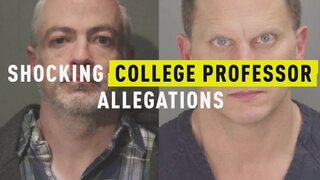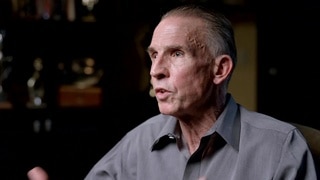Create a free profile to get unlimited access to exclusive videos, breaking news, sweepstakes, and more!
Why Waco Matters: What We’ve Learned Since The Standoff With The Branch Davidians
The 25-year-old event remains burned into popular culture. But why?
It was 25 years ago when plumes of black smoke rose into the sky, indicating the fiery torment inside the Branch Davidian compound in Waco, Texas. Armored vehicles driven by Federal Agents - weary and angry after a 51-day siege - rammed into the building as David Koresh and his followers burned inside, all while the nation watched live on T.V.
When it was over, more than 80 Branch Davidians and four ATF Agents were dead.
Waco is a name that’s synonymous with both native religious fanaticism and government overreach, and the push and pull between the two.
Whether you think of Koresh as a crazy child-abusing cult leader or simply a man trying to exercise his religious freedoms, Waco stays burned in the collective consciousness. What remains so fascinating are the questions: Did the Government start the fire that killed the Branch Davidians? Who shot first? Was Koresh a real threat? These questions, most unanswered except for speculation, fuel the fire of curiosity and demand attention, even all these years later.
Waco Today
They come in droves down a gravel road 10 miles east of Waco and through a black gate, to a rural complex that burned to the ground on April 19, 1993. Now there’s a memorial, USA Today reported, a headstone that lists the names of all those that lost their lives that day.
The site is now run by Pastor Charles Pace, who told USA Today that he counted 100 cars coming through the gate when he talked to the newspaper. A sign requests $5 donations to maintain the property. He serves as a trustee. No surviving Branch Davidians are associated with the site.
Waco has tried to move on. Chelsea Brindley Ressetar, director of advancement for a college-prep school, said the association has “definitely faded.”
“I don’t think you can brand a city based on an event that happened outside the town. I don’t think that was fair,” Ressetar told USA Today.
Another bright spot is the HGTV TV show “Fixer Upper,” featuring Chip and Joanna Gaines, two ultra-popular Waco-based home improvement experts. They’ve helped to rebrand the city and its 130,00 residents, and give it a friendlier image. They’ve got a couple properties where you can stay for a few days and enjoy the scenery, and of course, a popular store and restaurant.
In Popular Culture
There have been a number of TV shows and documentaries over the years to keep the story in the spotlight. In January, The Paramount Network premiered “Waco,” a six-part miniseries based on the events of the siege, starring Taylor Kitsch as Koresh. Critics had a few things to say about the retelling. The Hollywood Reporter called the movie “unnervingly sympathetic” to Koresh. The New York Times review said Koresh was portrayed with compassion and his alleged crimes were glossed over.
In December, “48 Hours” released an episode called “Secrets of Waco,” where they interviewed a UPS man who tipped off authorities about the massive amounts of guns and ammunition being stockpiled at the compound. It aired on December 19. No one had ever spoken to the UPS man before, and it was actually revealed that he was part of the surveillance operation on the compound.
Other shows chronicling the saga take a different approach.
ABC debuted a documentary in January called “Truth and Lies: Waco,” which featured new interviews with FBI and ATF agents, as well as new details about the siege. It also traced the origins of the organization from its ties to the Seventh-Day Adventist Church, Bustle reported.
On April 9, The Smithsonian Channel released “Waco: The Longest Siege.” It featured new interviews with former followers and insight into the organization's teachings.
Even the Koresh look is iconic in pop culture - the messy and curly Jesus hair, the stubble, the short sleeve button up preacher shirt and of course, the 1970s eyewear, notably parodied in an Amy Schumer sketch about serial killer glasses.
The Questions Remain
The raid and ensuing siege still captivates attention partly because no one seems to know exactly what happened on Feb. 23, 1993, when ATF agents served a search warrant on the compound. A firefight broke out and four ATF agents were killed, according to The New York Times, and thus began the 51-day standoff between the two groups.
But who fired first?
Houston attorney Dick DeGuerin testified at a government investigation that he saw bullets coming in through the doorway, not out, suggesting that authorities fired first. The door later disappeared, according to The Austin Chronicle.
There’s also the issue of the fire. FBI agents said the Branch Davidians started it themselves, and the Branch Davidians say the FBI were the ones behind it. The FBI said the fire started from three separate locations inside the compound, according to a report by Time.com. An independent arson investigation concluded the fire started inside the building.
Also, after flatly denying that they started the fire, the FBI admitted backpedaled and admitted they used pyrotechnic devices in the raid, seriously damaging its credibility, according to The New York Times.
Whatever happened that day, will probably never be known for sure, continuing such fascination with the case.
[Photo: Getty]






